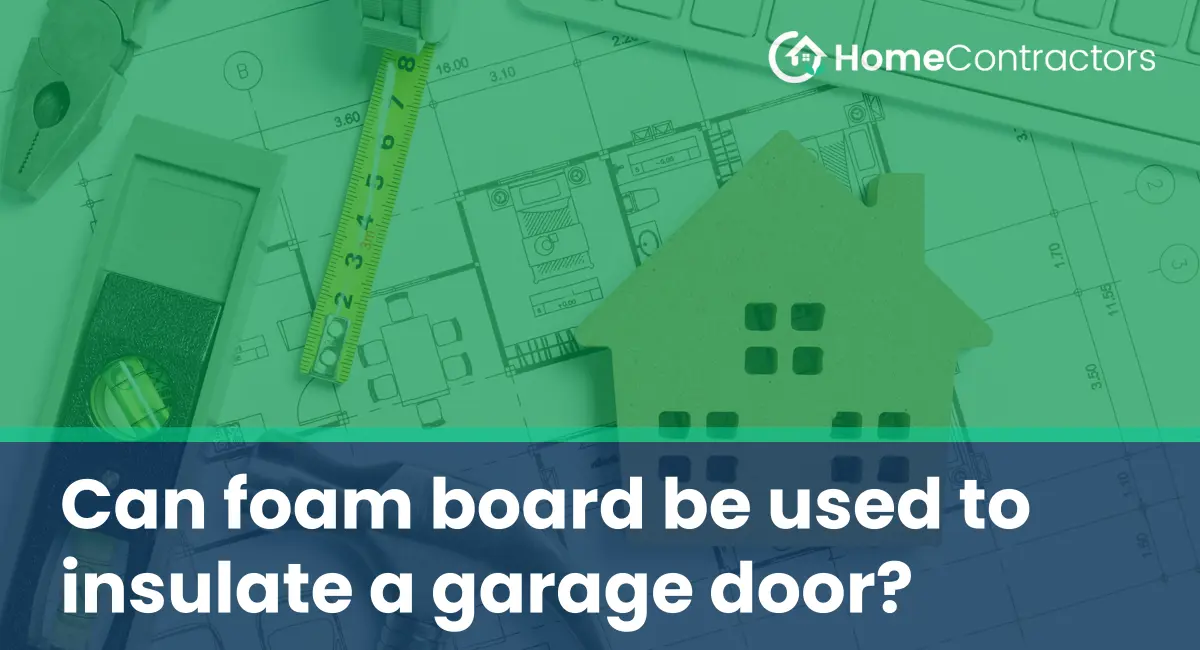Garage doors are often the weakest link when it comes to insulation in homes. They are usually made of steel or aluminum panels, which offer poor thermal resistance and can allow heat to escape during the cold months or seep in during the hot summer days. To combat this issue and improve energy efficiency, many homeowners consider adding insulation to their garage doors. One popular option is using foam board, also known as foam insulation panels or foam core panels. In this article, we will explore whether foam board can be effectively used to insulate a garage door.
Understanding Foam Board Insulation
Foam board insulation is a type of insulation material made from polystyrene or polyurethane foam. It comes in rigid panels that are lightweight, easy to handle, and have excellent insulating properties. These panels typically have a smooth surface on one side and a foil or plastic backing on the other.
Choosing the Right Foam Board Insulation
Before proceeding with insulating your garage door with foam board, it is essential to choose the right type of insulation for your needs. There are two main types of foam board insulation: expanded polystyrene (EPS) and extruded polystyrene (XPS).
EPS insulation panels are cheaper and have a lower R-value (a measure of thermal resistance) than XPS insulation panels. They are suitable for moderate climate conditions where only moderate insulation is required. XPS insulation panels, on the other hand, are more expensive but offer a higher R-value. They provide excellent insulation for extreme climates or for areas where maximum insulation is desired.
Preparing the Garage Door
Before installing foam board insulation, it is crucial to properly prepare the garage door. Start by thoroughly cleaning the surface to remove any dust, dirt, or grease. If there are any dents or gaps in the door, it is recommended to repair them before proceeding. This will ensure a smooth and even application of the foam board insulation.
Installing Foam Board Insulation
- Measure and Cut the Panels: Measure the dimensions of each garage door panel that you plan to insulate. Make sure to account for any obstructions such as handles, hinges, or windows. Transfer the measurements onto the foam board panels and use a sharp utility knife or saw to cut them accurately.
- Apply Adhesive: Apply adhesive to the back of the foam board panel using a foam brush or roller. Ensure even coverage to promote a secure bond between the panel and the garage door.
- Install the Panels: Press the foam board panels firmly against the garage door, starting from one corner and working your way across. Make sure the panels are aligned correctly and fit snugly. Use mechanical fasteners such as screws or nails on the edges or corners if additional support is needed.
- Seal the Seams: After installing all the foam board panels, seal the seams between them using foil tape or adhesive-backed weatherstripping. This will prevent air infiltration and enhance the insulation’s effectiveness.
Considerations and Benefits
While foam board insulation can effectively insulate a garage door, there are a few factors to consider. Firstly, adding insulation panels may increase the weight of the door, so it is important to ensure that the opener and springs can handle the additional load. Additionally, installing foam board insulation may affect the balance of the door, requiring adjustments to the opener’s settings or professional assistance.
The benefits of using foam board insulation on a garage door are numerous. It helps to reduce energy consumption by minimizing heat transfer and maintaining more stable temperatures inside the garage. This can result in lower heating or cooling costs, especially if the garage is attached to the main house. Foam board insulation also helps to create a sound barrier, reducing noise from both inside and outside the garage.
Foam board insulation can be an effective solution to insulate a garage door and improve energy efficiency. By selecting the right type of insulation, properly preparing the garage door, and installing the panels correctly, homeowners can achieve a more comfortable and insulated garage space. However, it is essential to consider the additional weight and potential balance adjustments that may be required. Overall, with proper installation and maintenance, foam board insulation can significantly enhance the insulation capabilities of a garage door.
